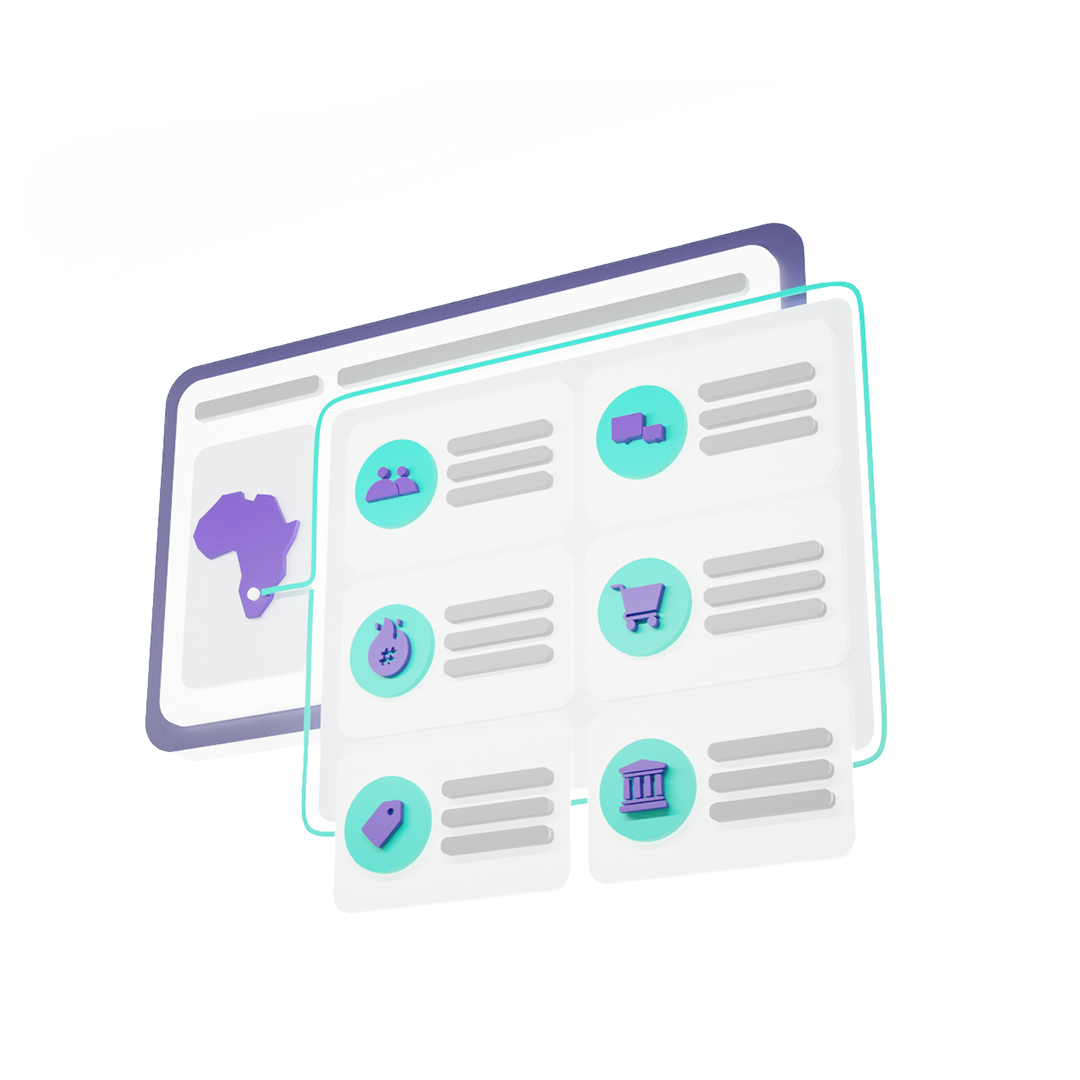Market research is the gathering of information regarding market demands and preferences. This helps businesses comprehend their target market, including how the audience feels and acts. There are eight types of market research for consumer insights that we will examine in greater depth.
Several market research tools can be categorized into two broad classifications: primary and secondary market research. So, let’s begin our list by examining these two categories;
1. Primary Research
Primary research is collected directly from the target market using various techniques. Because you generate the data, you own the data set.
Participants’ exploratory and conclusive results are collected as raw data and subsequently analyzed to conclude trends and comparisons.
There are three ways to conduct Primary research. They are Focus groups, One-on-One Interviews, and Surveys.
Focus groups
In primary research focus groups, a sizeable proportion of your target market is recruited as participants (based on demographics and mannerisms). Then, a key researcher or interviewer asks questions about a product or service during a conversation. Insights are derived from the group’s responses.
This strategy helps obtain the opinions of many individuals at once, especially when time is limited, but it presents its own administrative challenges. First, the interviewer must establish a method for collecting and recording responses while conversing with multiple individuals.
Participants may be influenced by acquiescence bias (which is the desire to give a particular response to satisfy the interviewer), dominance bias (where stronger participants might modify the results of less dominating participants), or researcher bias (a case where the research leads or influences the participants’ responses indirectly).
One-on-One Interviews
This technique is conducted directly between an interviewer and another participant, with each member engaging in a two-way discourse about study issues. Frequently, the interviewer would ask a couple of open-ended questions to stimulate conversation.
This creates a structured environment where the interviewer can listen to what is being stated and further investigate a response. In addition, the interviewer’s ability to recognize nonverbal indications from body language can assist the same in determining where to delve deeper and expand their comprehension.
However, similar biases (acquiescence and researcher) exist in this approach as well. This method also takes considerable time to conduct interviews and collect data thereafter.
Click to conduct Market Research for Africa Today!
Surveys
A survey is a compilation of open-ended and closed-ended questions digitally transmitted to a participant by email or survey dashboard that automatically collects responses. There are various survey questions, and selecting the most appropriate ones for your objectives is crucial.
Participants do not need to be physically present with the interviewer to complete a survey, making it an ideal technique for doing primary research. The survey can be completed from any location with an internet connection, allowing participants to utilize various devices and interviewers to contact respondents in multiple time zones. Preparation is essential, as the researchers need to segment the market and compile a list of survey respondents. Hiring a panel or utilizing pre-existing marketing lists can aid in this endeavor.
2. Secondary Research
Secondary research uses already acquired, evaluated, and published information (you do not own this data). This is illustrated via desktop research in market research.
This can include data from government statistics, think tanks, or research organizations in the public domain. It may also contain research from scholarly journals, educational institutions, and public sources such as newspapers for which payment was made.
Most material is readily accessible; hence secondary research methods are less expensive than primary research methods.
Secondary research can frequently serve as preparation for primary research, offering a foundation of knowledge. However, the collected data may not provide the exact information necessary to explain the results; therefore, primary market research would be used to improve comprehension.
The following market research types can be classified as qualitative or quantitative:
3. Qualitative Research
Qualitative market research is the compilation and analysis of non-numerical primary or secondary data that is difficult to quantify.
Researchers collect this form of market research since it can enrich the data.
This type of market research summarizes and infers rather than pinpointing a specific truth held by the target market. For instance, qualitative market research can help determine a target market’s reaction to a new product and provide a clear explanation to the organization.
Click to conduct Market Research for Africa Today!
4. Quantitative Research
Quantitative research is accumulating numerical primary or secondary data, which is, therefore, easier to obtain.
Researchers collect this form of market research because it provides historical benchmarking evidence supported by facts and figures.
Several methods for collecting this information include surveys, polls, desk research, financial records, and web statistics, which can be exploratory and lack significant depth at this time.
Quantitative market research can provide the foundational knowledge required for qualitative market research to evaluate hypotheses further.
The following four types of market research are tailored to certain subject areas and yield specific data:
5. Branding Research
Branding market research aids in creating, managing, and maintaining a company’s brand. This may pertain to the company’s identity, tone, visuals, or values.
The Research methods include interviews, focus groups, and surveys. For instance, brand awareness surveys will ask respondents if they are familiar with the brand and interested in patronizing it.
The purpose of the research will be to determine if:
- Your brand’s performance is relative to that of its competitors.
- There are areas to enhance your brand efforts.
- There are pros to highlight to enhance the image of your brand.
6. Customer Research
Customer market research examines the immediate impacts on your target customers and how your business can adapt to increase sales.
This research aims to understand your customers and their interactions with your firm comprehensively. Some of the topics covered include:
- Customer satisfaction – Investigating what keeps consumers satisfied, as greater customer happiness is more likely to result in increased customer retention.
- Customer loyalty – This examines the experiences that have led to an increase (or not) in customer loyalty throughout their lifecycle.
- Customer segmentation – This entails determining who the customers are, their tastes and behaviors, and what qualities they share.
Relevant desk research may examine past purchase information, customer journey mapping, demographics, and persona templates.
Click to conduct Market Research for Africa Today!
7. Competitor Research
Competitor market research involves identifying and analyzing your competitors’ strengths and weaknesses with your own. It may also pertain to the competitiveness of your market offering or how to enter a new market.
This study aims to discover methods for differentiating your firm and preparing its future through horizon scanning and consumer preference analysis.
For competitive analysis, researchers would build a SWOT for your firm and your competitors to determine how your business compares to the competition.
Customers may be interviewed about their purchasing preferences as part of primary research, while secondary sources could examine competitors’ market domination, sales, and structure. With this comprehensive study, you can identify areas where you may improve your competitiveness and search for ideas that set you apart.
8. Product Research
Product market research is essential to ensure that your products and services are market-ready and working optimally.
The purpose of this study is to determine how customers view your product and whether or not it provides value and functions correctly. Additionally, you can consider product enhancements and future product development.
There are several approaches to product research:
- Product branding – Do the brand and design of the product attract customers as intended?
- Product feature testing – This can occur at different phases of development with target markets (early design, between versions, pre-product launch, etc.) to determine if there is a favorable response to new or upgraded features.
- Product design reasoning – What solutions would answer your customers’ existing and future concerns?
- Product marketing – Do the marketing communications aid in the remembrance and sale of your product, or do they need improvement?
How to implement Market Research types in your business
It is preferable in a strong marketing strategy to have a variety of data across:
- Qualitative and quantitative research
- Primary and secondary research
- Your chosen subject matter or area of interest
With these three variables, you can ensure that your market strategy provides a comprehensive view of your market’s operational and experience data.
Take the right step to collecting dependable market research data in Africa
Survey54 provides the consumer insights necessary for your business to succeed in Africa and other emerging markets. Our self-serve platform enables businesses to build surveys, select their target audience in several African regions, and receive results instantly.
Survey54 addresses market research concerns by offering dynamic market research channels, including mobile-enabled fieldwork and data-free online and mobile platforms. Get in touch with us at info@survey54.com on how we can help your business grow through market research.










